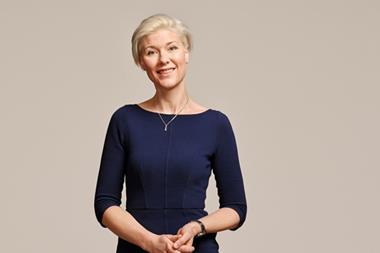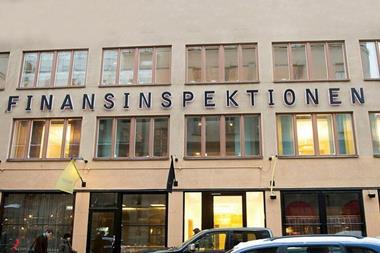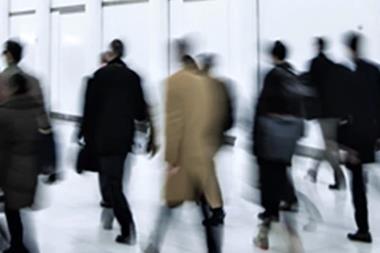Milan is Italy’s financial, fashion and design capital and also maintains bragging rights as the country’s most wealthy city. Yet despite its privileged position in the middle of the Lombard plain - a geographical location that has allowed the city to be a centre of industry and trade ever since the Middle Ages - not all of the locals are smiling.
The city struggles with such problems as traffic, pollution, crime, lack of affordable housing, an ageing population and infrastructure shortcomings. All these issues are central themes in upcoming local elections.
Like other Italian cities, a budget-strapped Milan has had to keep a tight rein over finances. To top it off, a poll published by Istituto Riza di Medicina Psicosomatica last September showed that nearly 70% of Milanesi surveyed were not happy to call the city home. Respondents cited factors such as the dreariness of their surroundings and the stressful pace of life as some of the reasons for their malaise.
“Milan has extraordinary potential,” says Bruno Ferrante, the city’s former chief of police and the centre-left coalition’s candidate to replace current mayor Gabriele Albertini in local elections slated for May. “It is the city of fashion, finance and great universities and looked upon with interest by foreigners, but there’s also an invisible city. It is the city of the rich and of many poor people who are unable to make it to the end of the month. Today it appears to be somewhat stagnant as a city.”
Ferrante is competing against Letizia Moratti, Italy’s education minister, who, like Albertini, is supported by the centre-right coalition. “Milan is certainly a great metropolitan city, with its strengths and weaknesses,” says Moratti. “The city has always been capable of working on ideas and also on realising them.” A series of urban renewal projects are indicative of this can-do spirit, she says, while the city must address problems of security and infrastructure.
Either Moratti or Ferrante is set to govern a city that has changed dramatically over the past few decades. Milan’s population has fallen from just over 1.7m at the start of the 1970s to about 1.3m. The resident population has now stabilised and it has actually increased slightly in the last few years, helped by an upturn in the birth rate and a growing foreign resident population. Immigrants from the Philippines, Egypt, Peru, China, Ecuador and Sri Lanka are among those most strongly represented.
Many former Milanesi have moved out to the areas surrounding the city in the province of Milan where the cost of living in general - and real estate in particular - is usually substantially lower. Both Moratti and Ferrante have pledged to work more closely with mayors of surrounding communities than has been the case under Albertini.
Not that long ago - in the flashy days of the 1980s before the so-called Tangentopoli corruption scandal was uncovered by Milan prosecutors - the city was known as ‘Milano da Bere’ (drinkable Milan). But while a far more sombre and restrained mood is now in the air, with weighty issues up for debate as locals go to the polls, there are still plenty of reasons for optimism.
Milan is Italy’s wealthiest city, with the latest figures showing per capita income of about €30,468 compared with €25,338 in Rome and €23,848 in Turin.
The unemployment rate in the city is low, at just 4.6%. Milan’s industrial production rose 0.7% in 2004, compared with a 0.7% decline on a national level.
Although families continue to express pessimism about the future, a survey conducted by Milan’s Chamber of Commerce in January showed that business confidence is high. The number of companies conducting business has steadily increased over the past decade and in an increasingly multi-ethnic city, the number of foreign-owned enterprises has jumped – with Egyptian, Chinese, Moroccan and Romanian entrepreneurs particularly active. Female-owned businesses arealso increasing in number.
Mayor Albertini - who must step down as his second mandate comes to a close - is a businessman himself and has generally pursued what is considered to be a pro-business agenda. At the same time, potential successors Ferrante and Moratti are both considered moderates and enjoy support among different segments of the local business community.
Coping with retrenchment
As the political leader of Italy’s most prosperous city and the second-largest in terms of population behind Rome, Milan’s mayor enjoys wide-reaching political powers. Nevertheless, to a certain extent the hands of Milan’s top politician are tied. Like mayors in most Italian cities, Albertini has had to get by with a reduction in funding from central government.
To help fund planned infrastructure projects such as the construction of two new metro lines, the city has privatised some activities, although some planned sales of city assets have proven to be difficult. Initial plans to reduce the city’s stake in Milan airport management company SEA, for example, were shelved in the autumn of 2001 after the double blow of the 11 September terrorist attacks and an air crash that claimed the lives of 118 at Milan’s Linate airport in October.
Recent plans to sell a minority stake to a private investor have faced a series of other obstacles. Finding a way to finance local infrastructure projects will continue to be a challenge for the local government.
Albertini will be leaving behind a series of high-profile development projects begun under his mandate and designed by world-famous names such as Daniel Libeskind, Cesar Pelli and Norman Foster. The projects are expected to help put the city firmly back on the architectural map and a futuristic trade fair opened in the spring of 2005 (designed by Rome architect Massimiliano Fuksas) has also contributed. The fair and its 1.3km undulating glass ‘sail’ running through the centre of the exposition have received rave reviews.
The CityLife project
Architects Daniel Libeskind, Zaha Hadid, Arata Isozaka and Pier Paolo Maggiora have been charged with redeveloping another, much older, trade fair site, which will maintain a slimmed down space in its city location. The project, called CityLife, is characterised by three distinctive skyscrapers and is made up of a mix of office, commercial and residential space as well as a park. Real estate prices around both the old and new trade fair have been sustained by the developments, as have prices in areas where other developments are planned or under way.
Architect Norman Foster has overseen the master plan for an upscale residential development currently being constructed in the southeastern part of the city known as Santa Giulia. American architect Cesar Pelli has drawn up the master plan for Milan’s planned Città della Moda (Fashion City), which will not only provide a new home for some of the city’s famous labels but will also house other commercial and office spaces, a fashion museum and new housing.
There is also a new headquarters for the region of Lombardy on the way, including a 160m skyscraper, designed by New York architectural firm Pei Cobb Freed & Partners alongside Caputa Partners and Sistema Duemila of Milan.
Builders are increasingly constructing with the idea of incorporating parks or other green spaces into new developments, whose aesthetic qualities have become a matter of public debate.
“Whenever a city undergoes a great transformation like Milan is right now, there’s always a debate,” notes Antonio Pastore, president of the Milan Chamber of Commerce’s real estate division Borsa Immobiliare. “We’ll only be able to judge these projects in 20 to 30 years’ time.”
The city has its own architectural tradition to draw on. Many architects are currently rediscovering Milan’s post-war architecture, starting with the 127m Pirelli skyscraper designed by Gio Ponti, one of the world’s largest concrete skyscrapers.
Ponti’s Pirelli tower, built in 1956, was a sign
of Milan’s capacity to strike back in the face of challenges. Heavily bombed during World War II, the city was a showcase for Italy’s post-war economic boom, initially building its success with companies that employed thousands of workers, such as giant tyre and cable factory Pirelli and sports-car maker Alfa Romeo. Then it successfully made the transition to an economy based on services.
Fashion, design, finance, high-tech, telecommunications, publishing, advertising, consulting services, healthcare and pharmaceuticals all represent important economic activities for the city. Milan also is the home of Borsa Italiana, the Italian stock exchange, which itself plans to be listed later this year, in a development that should pave the way for an alliance with another exchange.
Despite the city’s role as a centre of finance, Milan’s stock market has remained relatively small, with the stocks of some 279 companies currently listed and an international alliance seen as crucial for the exchange to retain its competitiveness. On the other hand, Milan’s real estate market has been vibrant in recent years, partly because Italians have sought out what they considered to be safer investment opportunities.
Novel new developments
New facilities within the city limits have been a rarity in Milan, where tearing down old buildings to make way for new constructions happens very infrequently, so the series of new projects under way is a novelty. One opportunity for development has been made possible by the closure of former industrial activities and the transformation of warehouses and office spaces for new uses: houses and trendy architectural and design studios. Alongside headline projects, the city has
also pledged to build thousands of new public housing units to meet demand for affordable housing.
Housing constructed in outlying locations - mainly in the towns just outside Milan - usually sells quickly, as buyers tend to reserve most of the properties before a building is completed. Large supermarkets and other commercial spaces that have sprung up on the city’s outskirts are also typically constructed with a specific end-user in mind and market participants say there is very little construction of new industrial spaces.
There have been mixed results with office spaces that were constructed near the city limits, some of which have remained vacant for extended periods, partly because of a lack of public transport links.
Local real estate sales prices continued their upward trend last year, although much more slowly than in recent years. Rental rates for Milan housing have tended to flatten out or even fall somewhat, although this development comes only after most observers agreed that prices had become unsustainable.
According to figures from the Milan Chamber of Commerce, the average price for a house in Milan is about €4,249 per m2, with the rate reaching an average of €7,439 in the city centre. Housing rental prices amounted to about €201 annually per m2, a 2.5% decline on 2004. Pastore said: “Rising prices and a consistent supply have caused the market to plateau.”
Price stability
Alessandro Ghisolfi of the research division of real estate group Gabetti, says that there has also been general stability in the last year for prime location office spaces. He said: “Prime location prices have kept steady at about €7,500-8,000 per m2.”
Foreign investors in the real estate sector have been increasingly present in Milan, particularly since Italy’s entrance into the European economic and monetary union (EMU) helped take away the significant exchange rate and interest rate risk that existed in the days of lira. Since then, there has been a proliferation of both local and international real estate funds.
The city has demonstrated a strong capacity to attract foreign direct investments across the board, with US, French and German firms leading the way. Foreign direct investments made up about 4.1% of the local gross domestic product in the 1999-2003 period, compared with a 1.8% rate in Turin and 1.2% in Rome.
Downsizing
With the transformation in the city’s economic fabric over the decades, there has also been a
shift in the size of local firms. Massive industries are mostly a thing of the past, with the vast majority of local companies employing fewer than
10 people.
Like other Italian cities, Milan’s economy is not immune to growing competition of products from countries with lower labour costs. Near Milan’s central square in front of the Duomo cathedral, vendors sell cheap imitations of the Prada and Louis Vuitton handbags that many tourists flock to the city to purchase.
Some local businessmen point to concerns about Milan’s ability to maintain international competitiveness. In 2004, Milan’s foreign trade deficit increased by about €4.5bn to €36.1bn. Some segments of the economy for which Milan is particularly famed, including textiles and clothing, are among those that have suffered. Milan’s universities have also enjoyed scant success in attracting foreign students, with only 2.5% coming from outside Italy. And that doesn’t sit well with those who would like the city to maintain its reputation as a capital of creativity and innovation.












No comments yet